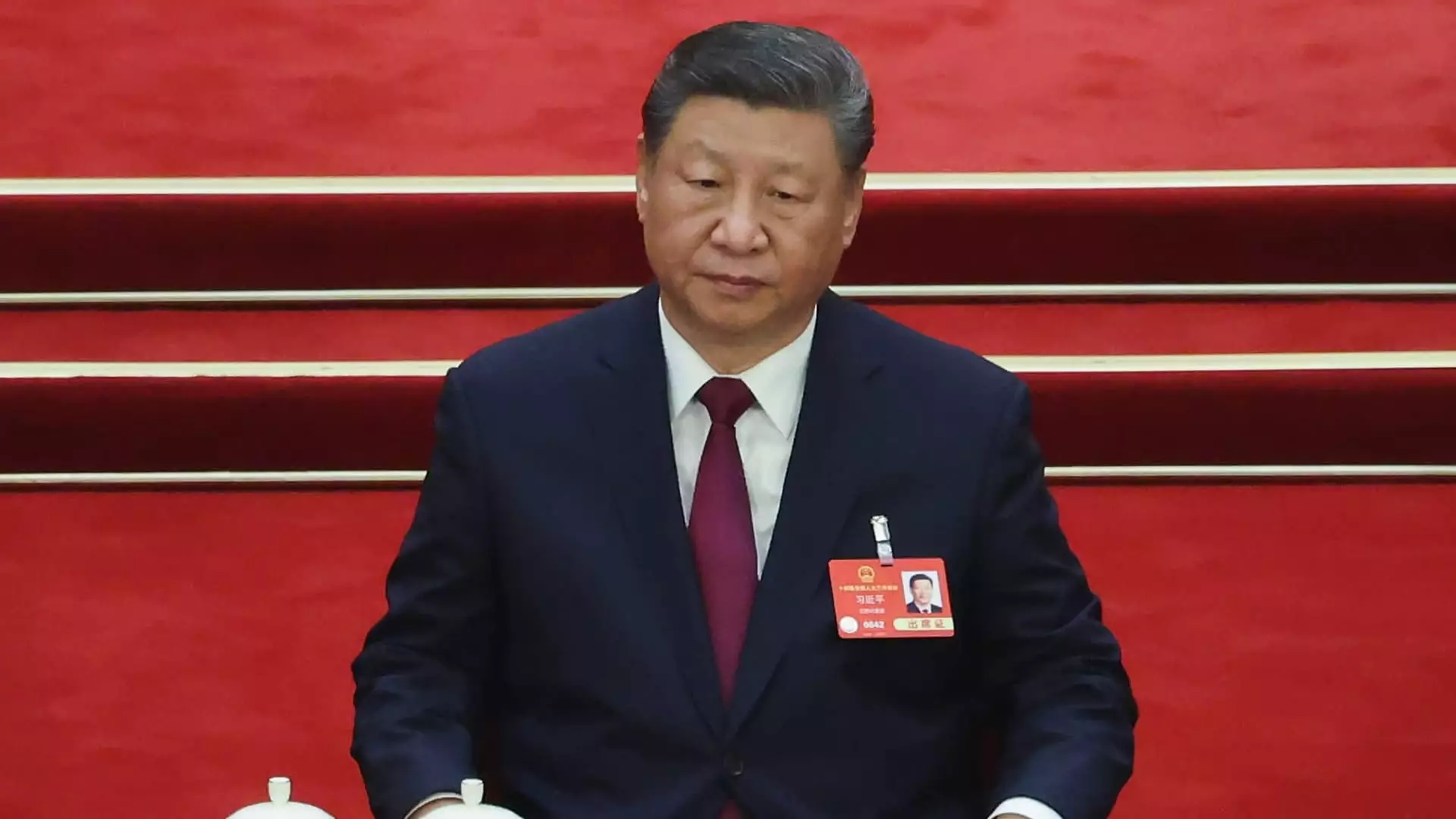The ever-intensifying trade war between the United States and China is proving to be more than just a political footnote; it has morphed into a devastating game of economic chicken. Recent revelations indicate that China has retaliated against President Donald Trump’s excessive tariff increases by slapping an astonishing hike on U.S. imports—now a staggering 84%. This alarming action reflects both a strategic maneuver and an escalating crisis that could very well smother the intricate web of trade between the globe’s two economic powerhouses. Rather than fostering dialogue and negotiations, the current administration’s aggressive tariff policies have backfired, pushing both sides toward a dangerous trade impasse that threatens global economic stability.
The Cycle of Retaliation
What started as a seemingly isolated issue has evolved into a vicious cycle of retaliation. On April 10, the tariffs on U.S. goods entering China surged to 84%, a clear message that China is unwilling to back down in the face of U.S. provocation. With the Trump administration declaring a 100% tariff on Chinese goods just days earlier, the notion of amicable negotiations between these two nations is dimming rapidly. The aggressive stance taken by both parties signifies that the tenets of international trade—as a platform built on mutual cooperation and compromise—are being disregarded in favor of short-term political calculations. Instead of creating a pathway toward resolution, the tit-for-tat tariff increases are only deepening the economic rift, inviting fears of a prolonged economic downturn.
The Stakes for Global Economies
As trade tensions simmer and tariffs soar, the ramifications are reverberating far beyond U.S. and Chinese borders. Reports from the Office of the U.S. Trade Representative reveal that in the previous year, the U.S. exported approximately $143.5 billion worth of goods to China, while imports ballooned to $438.9 billion—numbers that cast a shadow over the balance of trade. This disparity paints an alarming picture: escalating tariffs do not just disrupt trade; they lead to widespread uncertainty among global investors, raising the risk of a slowing economy, rampant inflation, and diminished corporate profits. The S&P 500’s descent of nearly 20% since its previous peak is a clarion call—markets are brimming with anxiety over what these punitive economic policies portend for the future.
The Role of Diplomacy
In a time when constructive communication should be front and center, the response from U.S. Treasury Secretary Scott Bessent has been inexcusably combative. His rhetoric suggests that the Chinese are both the architects of an “imbalanced economy” and reluctant participants in negotiations. This unforgiving posture fosters an atmosphere of mutual mistrust rather than collaboration. A more enlightened approach would recognize that engagement and diplomacy may yield better outcomes than confrontation. To label the Chinese economy as the “worst offender” without a nuanced understanding of its complexities only serves to fuel the fires of this trade war. It raises a question—why are the U.S. leaders opting for a strategy that invites alienation instead of seeking avenues for productive dialogue?
The Investor’s Dilemma
As investors grapple with the reality of this heated trade war, the sentiment in financial markets ranges from anxiety to outright panic. The abrupt downturn of South Korea’s Kospi Index into bear territory, paralleled with declines in Shanghai and Hong Kong stocks, proves that this crisis is far-reaching. The global economy thrives on interconnectedness; a stumble in one nation effortlessly sends shockwaves rolling through others. This reality shouldn’t be dismissed lightly; the stakes are exceedingly high. Investors must navigate treacherous waters filled with volatility and unpredictability stemming from unresolved tensions and erratic policy decisions.
Given the rapidly evolving narrative in the U.S.-China trade war, the way forward is shrouded in uncertainty. The once-promising prospects for bilateral negotiations have been overshadowed by escalating tariffs and entrenched positions. The real challenge lies ahead: will the leaders of these nations recognize the need for a truce, or will they continue down this perilous path, incurring significant costs for themselves and the world at large? With stakes this high, a measured and thoughtful approach may be the only path to restore economic harmony.


Leave a Reply